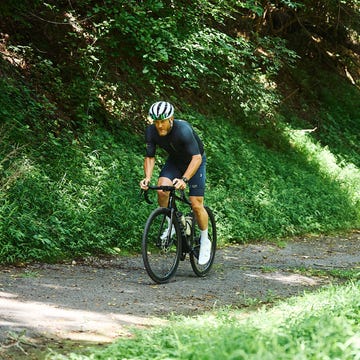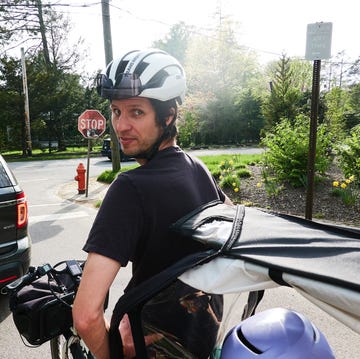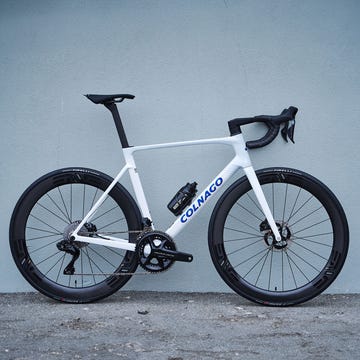Riding with a power meter is a great way to generate a lot of data. Understanding and analyzing that data can help you compare your performance from ride to ride, asses the physiological impact of your workout to better know where you are in terms of your overall fitness, and to help you better understand when you are ready to perform or when you need to take a rest.
To do this, riders need to look past basic metrics like their average and maximum power from their ride and instead turn to metrics like Normalized Power, Training Stress Score, and Intensity Factor. These metrics can better inform you about the ride you just completed and help you plan your next ride.
What is Normalized Power?
Very basically, it’s a way of looking at your average power in a more physiologically accurate way. For example, if you do a one-hour ride at a steady power of 200 watts, your average and Normalized Power (or NP) will be the same, at 200 watts. But say you did another one-hour ride where instead of riding at a steady 200 watts, you alternated doing 30 seconds at 350 watts and 30 seconds at 50 watts. This ride will also have an average power of 200 watts, but it will feel significantly harder, and in this case, the normalized power will be quite a bit higher.
To better capture the added difficulty of repeatedly going over your threshold in a highly variable ride, NP applies a 30-second rolling average that smooths out the spikes and dips. These 30-second rolling averages are then raised to the 4th power. Then, an average of these values is taken and the fourth root of the resulting average gives you an NP value.
Honestly, I’m not good enough at math to tell you what that means. But I do know that through these steps, a greater weight is placed on hard efforts, which physiologically can be felt for much longer than their actual duration. Think about how long it takes you to recover from a 30-second all-out sprint versus a 30-second tempo effort. That feeling is what NP is trying to capture.
Generally, you should apply Normalized Power to efforts longer than 20 minutes. For shorter durations, NP can be misleading.
Normalized Power is most helpful to look at rides or races where the average power will be dragged down by coasting or soft-pedaling. Things like criteriums, mountain bike, or cyclocross races, and hilly group rides. For these kinds of rides, NP will be a much better indicator of how hard the ride was when you compare it against your FTP.
What is Intensity Factor?
Intensity Factor (or IF for short) is a metric that compares the Normalized Power for a given ride to your FTP value. It tells you how hard you rode, relative to yourself. The IF math is a bit simpler, as it’s just your NP value from the ride divided by your set FTP value. So on highly variable rides, you might see an IF value greater than 1. An IF value of 1 exactly means that you did your ride at exactly your FTP. An IF value less than 1 means you rode at less than your FTP. The vast majority of rides will fall into this category.
You can use Intensity Factor as a shortcut to broadly indicate the type of ride you have just completed. An IF of 0.5 to 0.65 will indicate a recovery ride. Rides in the 0.65 to 0.75 range will be most riders' steady, long endurance rides. Your Tempo or aerobic endurance rides will be in the 0.75 to 0.85 range. From 0.85 to 0.95 will be your Threshold, and more intense efforts, such as time trials or tough interval sessions.
A helpful thing that IF can indicate is when you should consider re-testing your FTP. If you start to see your rides land at IF scores above one consistently, that is a surefire way to indicate that your FTP is likely set too low and you should do another test. The biggest limiter of IF is that it doesn’t consider duration. So, a one-hour ride at your FTP and a three-hour ride at the same power will have the same Intensity Factor. So, it’s better to focus on rides over one hour when considering if you need to re-test your FTP, since getting a high IF on shorter rides is easier.
What is a Training Stress Score?
Unlike Intensity Factor, Training Stress Score (or TSS) is meant to give one of the more holistic overviews of a ride as it factors in your FTP, NP, and the duration of your ride. Dr Andy Coggan and Hunter Allen first formulated the metric to compare rides of different intensities.
For example, a short but intense interval session can yield the same TSS as a long steady endurance ride, even though the two rides are very different in intensity and duration. This is because TSS balances both intensity and duration to evaluate the overall physical load a ride has generated.
The basic math behind TSS is done by taking your NP for the ride, dividing it by your set FTP, then squaring that number. Next, you multiply that first number by the duration of the ride in hours, and finally multiply that by 100 to get your TSS score for the ride.
You won't need to do any of this math, as most head units and analysis software like Strava or Training Peaks will do it all for you. However, I find it helpful to understand what goes into these various data points generated in the post-ride summary. Another good way to think about TSS is that a TSS of 100 equals one hour of riding at your FTP.
Similarly to IF, you can quickly understand the type of ride you have done based on the TSS it has generated. A TSS of 50 or less will generally indicate a recovery ride. In the 50 to 100 range, you're probably looking at a steady endurance ride under two hours. 100 to 150 TSS typically represents a hard ride of one to two hours. Above 150 TSS riders are looking at both hard and long rides that will require significant recovery time.
Test Editor Dan Chabanov got his start in cycling as a New York City bike messenger but quickly found his way into road and cyclocross racing, competing in professional cyclocross races from 2009 to 2019 and winning a Master’s National Championship title in 2018. Prior to joining Bicycling in 2021, Dan worked as part of the race organization for the Red Hook Crit, as a coach with EnduranceWERX, as well as a freelance writer and photographer.













